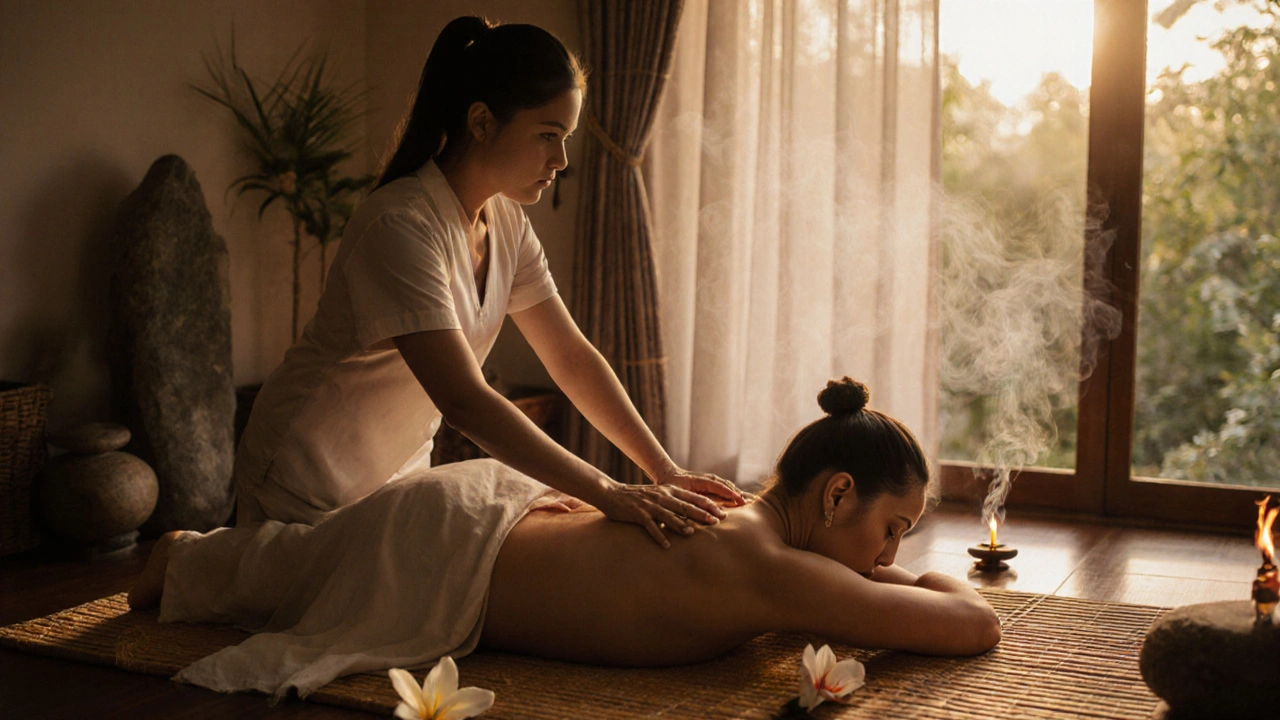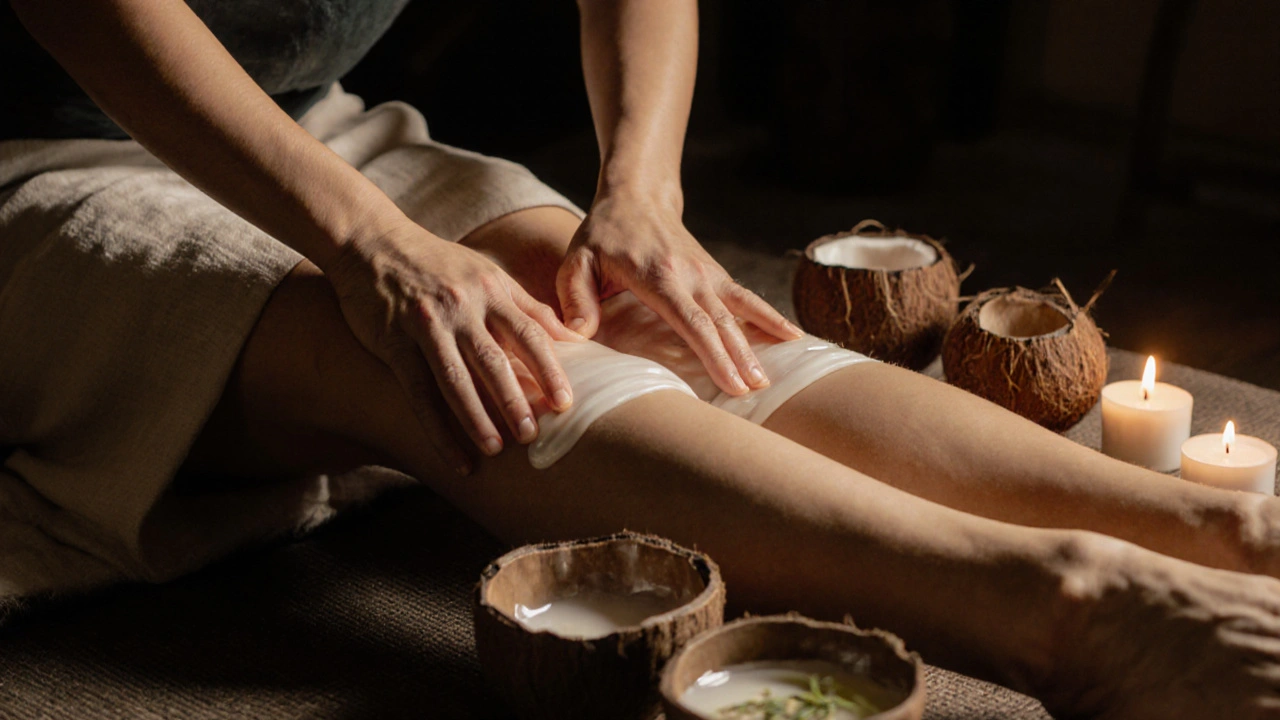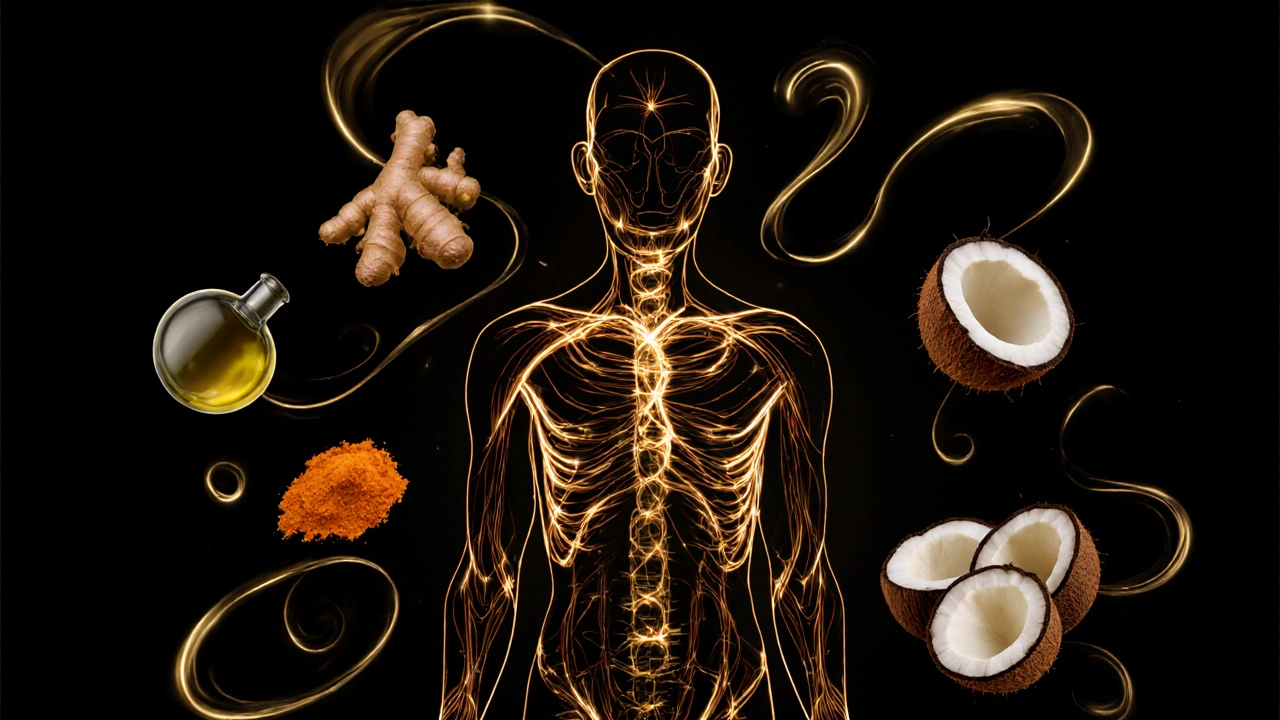The Ultimate Guide to Enjoying a Balinese Massage
 Nov, 15 2025
Nov, 15 2025
Imagine lying on a warm bamboo mat, the scent of frangipani and ginger filling the air, while skilled hands move over your body in long, flowing strokes-pressing, kneading, stretching-like waves rolling onto a shore. This isn’t just a massage. It’s a Balinese massage, and it’s been healing bodies and calming minds for centuries in Indonesia.
What Makes a Balinese Massage Different?
Not all massages are created equal. A Balinese massage isn’t just about relaxation-it’s a full-body therapy rooted in ancient healing traditions from Bali, Indonesia. Unlike Swedish massage, which focuses on gentle gliding strokes, or deep tissue, which targets knots with intense pressure, Balinese massage blends five key techniques: acupressure, reflexology, aromatherapy, long strokes, and gentle joint manipulation.
The therapist uses their thumbs, palms, elbows, and even forearms to apply rhythmic pressure along energy lines called meridians. These aren’t just random movements. Each motion follows traditional Balinese beliefs about the body’s life force, or prana. The goal? To unblock stagnant energy, improve circulation, and restore balance.
Essential oils play a big role too. Most spas use a blend of coconut oil, turmeric, ginger, and frangipani-ingredients known in Balinese medicine for their anti-inflammatory and calming properties. You won’t find synthetic fragrances here. The scent alone can lower cortisol levels within minutes.
What Happens During a Typical Session?
A standard Balinese massage lasts between 60 and 90 minutes. It usually begins with a brief consultation. The therapist asks about your pain points, stress levels, and any injuries. No need to over-explain-just tell them if your shoulders feel tight or your lower back aches after long drives.
You’ll lie on a padded mat on the floor, covered with a light cloth. The session starts with slow, grounding strokes along your back and legs. Then comes the pressure work-firm but never painful. The therapist will work on your feet, hands, and scalp, using reflexology points linked to internal organs. You might feel a deep stretch in your hips or a release in your neck that you didn’t know you needed.
One signature move is the engkel technique: a rhythmic rolling motion using the palms that feels like being gently crushed by warm sand. It’s not for the faint of heart, but it’s incredibly effective at breaking up tension.
By the end, you’ll feel heavy-not in a tired way, but like your body finally settled into its right place. Many people describe it as a mix between being hugged and being reset.
Benefits You Can Actually Feel
People don’t just get Balinese massages for vacation souvenirs. They come back again and again because the effects stick.
- Reduces chronic pain: A 2023 study in the Journal of Traditional and Complementary Medicine found that participants with lower back pain reported a 40% reduction in discomfort after six weekly sessions.
- Improves sleep: The combination of deep pressure and calming oils helps regulate melatonin. Many clients report falling asleep faster and staying asleep longer.
- Boosts circulation: The long, sweeping strokes increase blood flow, helping oxygen and nutrients reach muscles faster. That means less soreness after workouts.
- Calms the nervous system: The rhythmic rhythm of the massage triggers the parasympathetic response-the body’s “rest and digest” mode. Your heart rate drops. Your breathing slows. Your mind quiets.
- Enhances skin health: The natural oils nourish the skin without clogging pores. Regular clients often notice softer, more radiant skin after just a few sessions.
It’s not magic. It’s science mixed with centuries of observation.

Who Should Try It-and Who Should Skip It?
Most people benefit from a Balinese massage. But it’s not for everyone.
Great for:
- People with muscle stiffness from sitting all day
- Those dealing with stress, anxiety, or burnout
- Active individuals recovering from training or injury
- Anyone who wants to disconnect from screens and noise
Not ideal if you have:
- Recent burns, open wounds, or skin infections
- Severe osteoporosis or recent fractures
- Deep vein thrombosis (DVT) or blood clotting disorders
- Active inflammation from arthritis flare-ups
If you’re pregnant, it’s safe after the first trimester-but tell your therapist. They’ll adjust positioning and pressure. Always speak up if something hurts. A good therapist will never ignore your feedback.
How to Find a Real Balinese Massage
Not every spa that says “Balinese” actually does one. Some just slap on coconut oil and call it a day.
Look for these signs of authenticity:
- The therapist is trained in Bali or by someone who was
- They use traditional oils-not just lavender or eucalyptus
- The room has incense, soft music, or natural elements like bamboo and stone
- The session includes foot and scalp work, not just back and shoulders
- The therapist asks about your energy, not just your pain
In Brisbane, check out Yoga & Wellness Bali or Spa Nirvana. Both employ therapists trained in Ubud. Don’t be afraid to ask where they trained. A real practitioner will be proud to tell you.
What to Do Before and After
How you prepare and recover matters just as much as the massage itself.
Before:
- Hydrate well-drink at least two glasses of water an hour before
- Avoid heavy meals. A light snack like fruit or nuts is fine
- Turn off your phone. Seriously. Put it on airplane mode
- Wear loose clothing to the spa. You’ll be covered, but comfort helps you relax faster
After:
- Drink more water. Your body is flushing out toxins released during the massage
- Take it easy. Don’t schedule a high-intensity workout or a stressful meeting right after
- Take a warm (not hot) shower. It helps the oils absorb and keeps your muscles loose
- Rest if you can. Even 20 minutes of quiet time helps your nervous system integrate the work
Some people feel a little sore the next day. That’s normal-it’s your body adjusting. A warm compress on tight areas helps.

Can You Do It at Home?
Yes, but with limits.
You can’t replicate the full technique without training. But you can bring elements home:
- Use a blend of coconut oil and a drop of ginger essential oil
- Massage your feet using circular thumb pressure-focus on the arch and heel
- Use a long wooden roller on your back to mimic the sweeping strokes
- Light incense or diffuse frangipani oil while you stretch
It won’t be the same as a professional session, but it’s a good way to stay connected to the practice between visits.
Why This Isn’t Just Another Spa Treat
Balinese massage isn’t about luxury. It’s about restoration. In Bali, it’s not something you do when you’re stressed-it’s something you do to stay balanced. It’s woven into daily life, like drinking tea or walking barefoot on grass.
When you receive one, you’re not just getting a massage. You’re participating in a 500-year-old tradition of healing that respects the body, breath, and spirit. That’s why people don’t just remember their first Balinese massage-they return to it, again and again.
It’s not expensive. It’s not flashy. But it works.
Is a Balinese massage painful?
It’s firm, but it shouldn’t hurt. The pressure is deep and rhythmic, designed to release tension, not cause pain. If you feel sharp or shooting pain, speak up. A good therapist will adjust. Some soreness the next day is normal, but acute pain isn’t.
How often should I get a Balinese massage?
For general wellness, once a month works well. If you have chronic pain or high stress, weekly or biweekly sessions for 4-6 weeks can make a big difference. After that, you can reduce to monthly maintenance. Listen to your body-it’ll tell you when it’s time.
Can I get a Balinese massage if I’m pregnant?
Yes, after the first trimester, with modifications. Avoid deep pressure on the abdomen and lower back. The therapist will use side-lying positions and lighter strokes. Always choose a therapist trained in prenatal massage. Many Balinese therapists have this experience.
Do I need to undress completely?
No. You’ll be covered with a cloth at all times. Only the area being worked on is uncovered. Most people keep their underwear on. The therapist respects your privacy-this isn’t about exposure, it’s about healing.
What’s the difference between Balinese and Thai massage?
Thai massage involves stretching and yoga-like positions, often done on a mat with the client fully clothed. Balinese massage is more about pressure, oils, and rhythm, usually done on a table or mat with the client partially undressed and covered. Thai massage is more active; Balinese is more soothing and oil-based.
Are the oils used in Balinese massage safe for sensitive skin?
Most traditional oils are natural-coconut, turmeric, ginger, frangipani. These are generally gentle. But if you have allergies, ask for a patch test first. Some spas offer unscented or hypoallergenic versions. Always communicate your skin sensitivity ahead of time.
Next Steps: Make It Part of Your Routine
Don’t wait for a vacation or a crisis to try it. Start small. Book one 60-minute session. Notice how your body feels the next day. Notice how your mind settles after.
That’s the real gift of Balinese massage-not the exotic setting, not the scents, not even the skilled hands. It’s the quiet reminder that your body remembers how to heal. You just have to let it.
